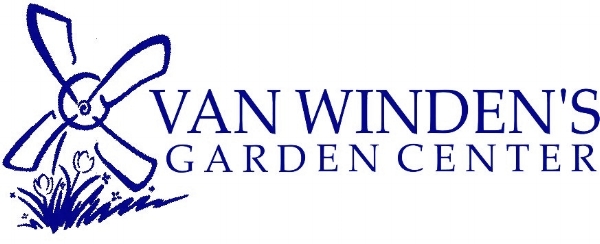What To Plant
Fall is a great time for branching out! Spring isn’t the only time to expand your landscaping horizons. The cool days and warm soil of Autumn give all kinds of trees, shrubs, and bulbs a great start. And when you add a little greenery to the scenery, the value of your home blossoms. Plan on planting this fall.
Fall planting is especially beneficial for the biennial, old-fashioned favorites such as hollyhock and foxglove. Planting them now allows them to establish a robust root system before spring to produce huge healthy spikes of beautiful color. Biennials require a portion of 2 years in order to mature and produce flowers. Planting them in fall is the most efficient use of the calendar to get these plants to bloom in the shortest amount of time.
Get a start on winter vegetables and flowers. The earlier you set out your cool-weather crops, the better (unless we have a late het wave!) Cabbage and broccoli will grow especially large if started now. Lettuces are another good choice and be sure to plant carrots, beets, or radishes from seed.
Plant sweet peas this month and next for bouquets of fragrant blooms in the Spring. Sweet peas require a good support since they love to climb. It also makes it easier to pick them for posies. Choose sturdy trellises or supports of chicken wire. FYI their little tendrils can’t wrap around thick gauge wire! Set out snail bait to protect the young plants once they break the soil level and consider protecting you plants from birds.
Sow flower seeds. Many wildflowers and spring annuals grow from seeds scattered now. Try California poppy, lupine, bachelor button, alyssum and clarkia.
Plant autumn blooming chrysanthemums. Drop by and choose from purples, butterscotch, rust, maroon, yellow, white, red, gold and more. Mums are excellent in containers and planted en masse in the flowerbed. Don’t forget to decorate your front entry with cornstalks, pumpkins, gourds and colorful chrysanthemums. Continue the harvest theme indoors with bowls heaped with mini pumpkins, gourds, colorful Indian corn and more.
Plant bulbs in the fall for spring flowers. Plant ranunculus and anemones as soon as you can get them in the ground. The same applies for bearded iris. Other bulbs like tulips and hyacinth need six weeks of chilling in the refrigerator before planting. Plant them in November but buy them in September because we always sell out!
Plant holiday favorites now. Plant hollies, pyracantha and other berry producing shrubs for winter decoration indoors and out. Try pomegranates and persimmons for ornamental and edible fruit.
Plant Nutrition
Fall is the ideal time to refresh the soil in your vegetable garden especially if you are planting a winter crops like brassicas/ lettuces, peas, and root vegetables. Bumper Crop Soil Conditioner will replenish the fertility of your soil as well as enhance the texture. Count on using 4 bags of Bumper Crop Soil Conditioner for 32 square feet of garden soil, or a thinner layer if you soil health is well established.
Hydra Blue is an acidifier for lowering the pH of soils. It is used extensively to turn Hydrangeas blue. Dig some into the soil around your bigleaf hydrangeas this fall for a “bluer” spring.
A mix of Fish Emulsion and Liquid Seaweed covers all three macronutrients and 50 micronutrients! It feeds your plants quickly and builds up the good bugs in your soil too. Some studies suggest this combo helps plants be more frost hardy!
Feed your lawn monthly. In October begin applying Masters’ Fall & Winter Feed. It’s a critical time to nourish the lawn and keep it green and healthy through the fall and winter. If the lawn’s not green by Thanksgiving it will be hard to “green it up” before the warmer temperatures of Spring. [In times of drought, there is no shame in letting your lawn go brown!]
Maintenance
Feed roses now. They can take up food for two months before leaf drop. With a bit of care and concern shown to your roses now, you will be able to enjoy their beauty long after most flowers have stopped blooming. Autumn roses are something special. Their colors seem to deepen and reflect the changes of the season. Water on a rising temperature. As the temperatures cool cut back on frequency but not the quantity of water applied. Remove any fallen foliage to protect your roses from diseases.
Bring in houseplants that have summered outdoors before the nights drop below 55 degrees.
Cut back geraniums early September while they still have warm weather to fill out and create a protective canopy before frost hits.
Give a final pruning to your citrus trees if they need it. They need warm weather to produce new growth so do this sooner rather than later.
Fertilize azaleas, rhododendrons, and camellias which are all starting to form their flower buds right now. If you want a big flower show this spring now is the time to act!
Fruit Trees
Almond fertilize mature trees / irrigate / harvest
Apple irrigate / harvest
Apricot pruning / irrigate
Cherry irrigate
Fig irrigate
Peach/Nectarine fertilize mature trees / irrigate / harvest
Pear irrigate / harvest
Pecan irrigate / aphid control / harvest
Persimmon irrigate / harvest
Pistachio irrigate / harvest
Plum/Pluot/Prune irrigate / harvest
Quince irrigate / harvest
Pomegranate irrigate / harvest
Walnut fertilize young trees / irrigate / harvest
When irrigating, provide enough water to wet the soil 18” to 24” down. If using drip irrigation, place emitters in a circle around the tree at the drip line/canopy, not at trunk. Water deeply as needed instead of frequently and shallowly.



